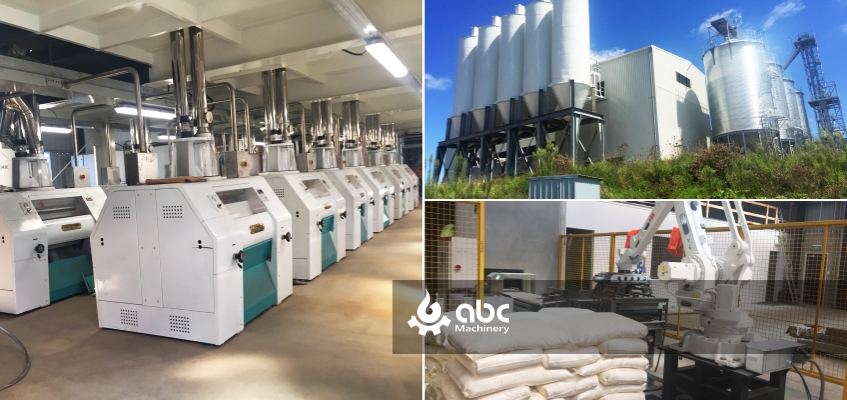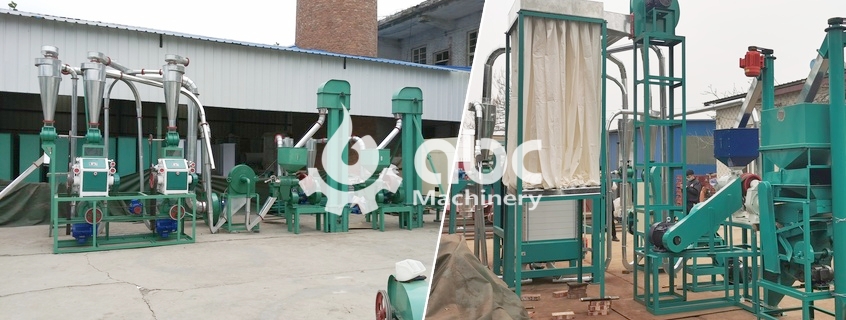South Africa is not only one of the largest maize producers in Africa but also a key regional hub for maize processing and exports. In recent years, driven by upgraded food consumption trends and increasing import demand from neighboring countries, the local maize milling industry has shown steady expansion. For investors, the country offers a well-established agricultural base and mature processing expertise—alongside policy, logistics, and raw material volatility challenges.

ABC Machinery: Professional Maize Milling Solution Provider
This article will break down the critical steps to setting up maize mills in South Africa—covering market access and regulatory red lines, factory location, maize processing equipment, and production process decisions, as well as capital allocation and future export opportunities—helping you build a clear execution framework.
When investing in maize mills in South Africa, the first hurdle is not equipment or raw materials—it’s regulatory compliance.
Each South African province has different investment priorities:
For example, in 2023, a Zimbabwean investor built a maize mill plant in Free State and enjoyed land tax exemptions, but due to being 600 km from the main export port, transport costs were about 18% higher than coastal factories.
South Africa imposes no absolute cap on foreign ownership in agricultural processing. However, for land purchases, water rights, and environmental assessments, both provincial and national approvals are required.
South Africa offers tax benefits and import duty exemptions for certain agri-processing projects, but these are not open to all investors.

Invest in A Profitable Maize Mill Business in South Africa
Pre-investment Policy Feasibility Checklist:
In South Africa, factory location determines long-term operating costs and market coverage efficiency. Many investors focus only on land prices or proximity to raw materials, overlooking the balance between logistics and market access. (Related Post: Flour Mill Plant Site Selection>>)
Coastal ports (e.g., Durban, Port Elizabeth, Cape Town) are major export gateways for South African maize milling products.
Inland provinces (e.g., Free State, Limpopo, North West) are South Africa’s primary maize production zones.
| Location Type | Suitable Business Model | Cost Advantage | Risk Point | Typical Capacity |
|---|---|---|---|---|
| Port-Logistics Based | Export-focused, international clients | Low export freight | High raw material transport costs | 100–200K tons/year |
| Inland Production | Local market, regional sales | Cheap raw material sourcing | Export logistics disadvantage | 10–50K tons/year |
Tip: If exports exceed 50% of total output, prioritize port-based sites; if targeting local markets with high sensitivity to raw material costs, inland locations are more cost-effective.
Equipment defines plant capacity, product quality, and operating costs. New entrants often get swayed by “high output” or “fully automatic” marketing claims, overlooking alignment with raw material characteristics and market demand.

Buy Small Maize Flour Mill Machine from ABC Machinery
Action Tip: Before finalizing your equipment list, conduct a triple-match evaluation—market demand + raw material characteristics + maintenance capacity. We offer localized solutions combining imported main machines with South African-made auxiliary equipment to reduce maintenance complexity and spare parts costs.
South African maize varies greatly in quality—moisture, impurities, and grain size differ by region, impacting final product stability. Free State maize is high in protein, ideal for premium maize flour; parts of Limpopo produce high-moisture maize, requiring extra drying stages.
Market demands:
Differentiated Process Design Examples:
Action Tip: Avoid generic maize flour mill process blueprints—base design on raw material testing and market positioning. Our process packages include a raw material–product matching analysis table to ensure your production line works right from the start.
With regional consumption upgrades and trade facilitation, South Africa’s maize milling sector faces structural opportunities. Early movers during this trend phase can secure stable returns in the next 5–10 years.
1. Product Structure Upgrades
Traditionally, local maize mills in South Africa produced basic maize meal—high competition, thin margins. Demand is rising for higher-value products:
2. Regional Export Potential
As a core member of the Southern African Customs Union (SACU), South Africa can export maize products duty-free to Botswana, Namibia, Lesotho, and Eswatini.